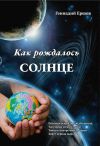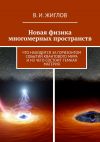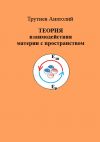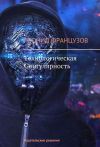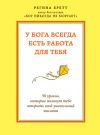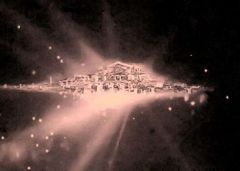
Автор книги: Azamat Abdoullaev
Жанр: Физика, Наука и Образование
Возрастные ограничения: +16
сообщить о неприемлемом содержимом
Текущая страница: 1 (всего у книги 7 страниц) [доступный отрывок для чтения: 2 страниц]
SCIENCE AND TECHNOLOGY XXI:
Physics X.0 & Technology X.0
Azamat Sh. Abdoullaev, PhD
Copyrights © <2016> <Azamat Abdoullaev>
All Rights Reserved.
The whole book or its part should not be copied or used otherwise for any commercial purposes without a written permission of the author, excluding the reader’s personal development and citation in scientific literature or social media networks.
First Book of Monographic Series: < SCIENCE AND TECHNOLOGY XXI>
Physics X.0 & Technology X.0; EIS Encyclopedic Intelligence Systems; EU, Russia, 2016
ISBN set 978-9963-2202-1-2
ISBN 978-9963-2202-2-9
Annotation
The first book of monographic series of Science &Technology of the 21st century is devoted to the Natural Science of Physics and Technology of tomorrow: Physics X.0 and Technology X.0.
New Physics X.0 as the leading natural science naturally unified in terms of convertibility and conservation of all natural forces and reversibility of all physical entities and processes is promising a dramatic advance in research, knowledge and understanding of the physical world.
All basic assumptions and principles, as symmetry principles and conservation laws, and the latest conceptual developments, as theory of everything or “dark energy” and “dark force”, imply the necessity of Unified Physics X.0 as a replacement of modern fragmentary and overspecialized Physics 2.0.
It is shown that most future technologies and breakthrough innovations will be the engineering products of Natural Science XXI and Physics X.0 coming from the universal reversibility mechanism.
The interconnection of physical phenomena, convertibility of all physical forces, and reversibility of all physical entities and effects, all is enabling to create revolutionary intelligent applications, like as Encyclopedic Knowledge Base in Physical Science for General AI.
Preface
It is the first book of monographic series of Science &Technology of the 21st century, devoted to the Natural Science of Physics and Technology of tomorrow. The idea of the Science X.0, Physics X.0, and Technology X.0 is rooted in the terms “Web 2.0” and its indefinite extension, the Web X.0, both superseding the old and static business model of Web 1.0 of Netscape. Initially it was introduced as an “Internet operating system”, “Inventing the Future,” http://www.oreillynet.com/pub/a/network/2002/04/09/future.html; “What Is Web 2.0,” www.oreillynet.com/pub/a/oreilly/tim/news/2005/09/30/what-is-web-20.html.
The Science X.0, Physics X.0, Technology X.0, and Engineering X.0 make the key parts of the World Sustainable Development Roadmap, showing the human civilization development directions, combining scientific achievements, technological breakthroughs and engineering deeds with political, economic, social or organizational innovations.
The Roadmap shows a high way to the New World of Science and Technology, Intelligence and Innovation, Progress and Prosperity:
WORLD 1.0 (Industrial World) ::
Science 1.0 > Physics 1.0 > Technology 1.0 > Engineering 1.0 > Economy 1.0 > Industry 1.0 > Infrastructure 1.0 > Network 1.0 > Telecom 1.0 > Internet 1.0 > Web 1.0 > Service 1.0 > Medicine 1.0 > Human 1.0 > City 1.0 > Government 1.0 > Nation 1.0 > Society 1.0 > Global Community 1.0 >…Space 1.0
WORLD 2.0 (Post-Industrial Information World) ::
Science 2.0 > Physics 2.0 > Technology 2.0 > Engineering 2.0 > Economy 2.0 > Industry 2.0 > Infrastructure 2.0 > Network 2.0 > Telecom 2.0 > Internet 2.0 > Web 2.0 > Service 2.0 > Medicine 2.0 > Human 2.0 > City 2.0 > Government 2.0 > Nation 2.0 > Society 2.0 > Global Community 2.0 >…Space 2.0
WORLD 3.0 (Post-Information Smart World) ::
Science 3.0 > Physics 3.0 > Technology 3.0 > Engineering 3.0 > Economy 3.0 > Industry 3.0 > Infrastructure 3.0 > Network 3.0 > Telecom 3.0 > Internet 3.0 > Web 3.0 > Service 3.0 > Medicine 3.0 > Human 3.0 > City 3.0 > Government 3.0 > Nation 3.0 > Society 3.0 > Global Community 3.0 >… Space 3.0 …> POST-HUMAN SINGULARITY WORLD
…………………………………………
WORLD X.0 (Post-Human Singularity World)::
Science X.0 > Technology X.0 > Engineering X.0 > Economy X.0 > Industry X.0 > Infrastructure X.0 > Network X.0 > Telecom X.0 > Internet X.0 > Web X.0 > Service X.0 > Medicine X.0 > Human X.0 > > City X.0 > Government X.0 > Nation X.0 > Society X.0 > Global Community 3.0 >…Space X.0
Science (Mathematics and Physics), Technology, and Engineering are the root causes of historical human development and all the future progress and prosperity of humanity as the socio-technological civilizations.
Science (Mathematics and Physics) is the systematic study of the world, looking for general truths, empirical laws, scientific theories, theoretical systems, and the operations of fundamental laws.
Technology is generally viewed as the systematic study of techniques for changing the world, the human environment, by making and doing things, from simple machines to complex machinery, as cars or airplanes. It applies science to practice, the theoretical into the practical, associated with scientific products, artefacts, and the useful arts. There are as many technological sciences as scientific disciplines, mathematical, physical, chemical, biological, social, political, ecological, etc.
Engineering is engaged with converting natural resources into machines, machinery, engines, structures, systems, products and processes, applying fundamental scientific principles and technological sciences. Being one of the oldest professions in the world, after physics and mathematics, and producing the Industrial Revolution, it involves such major engineering disciplines, as civil, mechanical, chemical, electrical, as well as geological, nuclear, electronics, communications, instrument, computer, medical, biological, cognitive, social or environmental engineering, with numerous specialties and sub-disciplines.
Common to all diverse fields of science, technology and engineering, they all are grounded on a few fundamental principles of fundamental sciences, mathematics and physics; or, there are no professional technologists and engineers without knowing the fundamental sciences.
Physics X.0 & Technology X.0 & Engineering X.0 aimed to consistently unify a chaotically growing number of new sciences, technical sciences, and new engineering disciplines, focusing on emerging technologies, sophisticated technical innovations and complex cyber-physical ecosystems.
This Big Knowledge Unification covers such complex intellectual technological and engineering activities, as the Future Internet of Everything, Encyclopedic AI, Intelligent Industry, or Technological Settlements of the Future, Intelligent Nations or Smart Green Cities.
While pursuing the high goal of knowing the unifying principles of nature, the best methods of reversing of natural forces, and optimal converting of natural resources for public utility, the Physics X.0 is to operate with all the Fundamental Units of Matter, Life, Heredity, Brain and Mind:
Forces,
Atoms,
Energy,
Neurons,
Genes,
Bits,
Ideas
PHYSICS X.0: Reversible Universe, Prime Force, and Theory of Everything
Natural science is about the whole Nature. It studies the entire material universe, its natural causes and phenomena, as the sum total of physical entities and forces, as the infinite system of natural entities, forces, changes and events.
Natural Science XXI makes the New TRIVIUM of major sciences: Physical science, Biological science and Mathematical science.
Physical science is the leading natural science, as doing the systematic study of the inorganic world, being completed with the life science of biology engaged with the systematic study of the organic world.
Its subject is treating of the general properties of matter as a whole, its composition and structure, properties and states, energy and force to formulate the first laws of behavior of the universe and nature, all divided among four interrelated branches: Astronomy, Physics, Chemistry and the Earth science.
The key idea of the physical science and physics itself consists in the insight that ALL THE FORCES OF NATURE AND FORMS OF MATTER AND ENERGY are INTERRELATED and INTERCONVERTIBLE.
Paradoxically, these universal phenomena have never been expressly formulated as the basic principles of nature:
THE UNIVERSE, NATURE, THE WORLD, or THE COSMOS is UNIFIABLE and REVERSIBLE.
FORCE, MATTER, MOTION, or ENERGY are neither created, nor destroyed, but CONSERVED, CONVERTED and REVERSED.
EVERYTHING REVERSED IN THE WORLD, MATTER INTO ANTIMATTER and PROCESS INTO REVERSE PROCESS.
Technology X.0 is innovated as fostering an intelligently expanding human environment and big quest to explore the depths of an infinitely wonderful physical universe.
It is shown that the most advanced technologies and breakthrough innovations and revolutionary applications are to reversibly convert natural forces, chemical, thermal, electrical, magnetic, electromagnetic, nuclear, gravitational and mechanical, in a closed loop, with zero-waste of matter and energy.
The level of development of future technology and intelligent socio-technological communities is the capacity to control the forces of nature as according the Great Schema of Forces studied by new Physics X.0:
Prime Force (ToE)::
Quantum Gravity Forces (Space Curvature, Standard Model of Cosmology; Electronuclear Force (GUT, Standard Model of Particle Physics)::
Strong Interaction (SU (3); Electroweak Interaction (SU(2) x U(1))::
Weak Interaction and Electromagnetism U(1em)::
Magnetism and Electricity::
Non-Fundamental Forces (contact forces, elasticity, viscosity, friction, pressure, etc.)
Read “SCIENCE AND TECHNOLOGY XXI: Physics X.0 & Technology X.0” to completely change your current conception of PHYSICAL REALITY.
Physical Science as the Base of Science and Technology
Physical science is both the key science and the leading natural science, being simple in its principles but universal in the scale and scope of its application.
Regardless of increasing numbers of experiments and observations, discoveries and divisions, effects and their applications, a small number of universal laws are operating all the acts of the universe, and the same principles regulate all complex processes and all natural forces.
All physical science has three common characteristics while studying the world of changing things, matter in motion, energy in conversion, forces in action, and processes in effects:
1. experimentation and observation and scientific method to study, demonstrate and discover,
2. applying mathematics and strict symbolical formalism to formulate hypotheses, empirical laws, generalizations and their consequences,
3. putting all the phenomena of nature and actions of universe under the fewest number of primary principles and basic laws of nature in the simplest mathematical statements, logical formulations and consistent theories.
All the forces of nature and forms of matter, energy, motion and change are interrelated and interconvertible, so that a network of forces in the n-dimensional space of physical quantities, as space and time, ties the cosmos into a unity, the universe.
These universal properties and fundamental phenomena in need of having been expressly formulated as the basic principles of nature, namely:
I. the UNIVERSE, NATURE, THE WORLD, or THE COSMOS is UNIFIABLE and REVERSIBLE
II. FORCE, MATTER, MOTION, and ENERGY are neither created, nor destroyed, but CONSERVED, CONVERTED and REVERSED
III. EVERYTHING REVERSED IN THE WORLD, MATTER INTO ANTIMATTER and PROCESS INTO REVERSE PROCESS.
If the reversibility properties of nature and the convertibility of energy and unity of the forces of nature had been formulated as a universal principle and basic laws since the very beginning of modern physics, we'd have different physical science, more logical and systematic, predictive and productive, more esthetic and attractive, smarter or more intelligent and machine-wise.
Physical science is the base of modern technology, innovation and applications, which laws and principles are at the core of most engineering sciences and future technologies, see Supplement1.
So to create future Technology X.0, we need new physics, Physics X.0.
The State of Affairs of Physical Science
Physical science is traditionally defined as the natural science doing the systematic study of the inorganic world, as being completed with the life science of biology doing the systematic study of the organic world.
Its subject is treating of the general properties of matter as a whole, its composition and structure, properties and states, energy and force-relations to formulate the first laws of behavior of the universe and nature basing on natural ontology and mathematics, as divided among four interrelated branches:
Astronomy
Physics
Chemistry
the Earth science
Astronomy
Astronomy, including astrophysics and cosmology, studies the entire universe beyond the Earth, including the universe’s structure and evolution, its cosmic objects (as stars, galaxies, planets, moons, asteroids, comets and nebulae) and their physical processes (as supernovae explosions, gamma ray bursts, and cosmic microwave background radiation, etc.), and how the Earth relates to interactions with the solar system.
Chemistry
Chemistry treats of the structure, composition and properties of substances and all possible changes, transformations or reactions they undergo, being about the properties and reactions of molecules. It is about the interactions of substances through chemical reactions to form different substances, including analytical chemistry, inorganic chemistry, organic chemistry, biochemistry, polymer chemistry, physical chemistry, and industrial chemistry.
The Earth science
Earth science is dealing with planet Earth, how the natural environment (ecosphere of geosphere and biosphere or Earth ecosystem) works and evolves, including the study of the atmosphere, hydrosphere, lithosphere, and biosphere, involving atmospheric science and environmental science, geology and geography, geoinformatics, glaciology, oceanography and soil science.
Physics
The core of physical science, physics, deals with the structure of the matter and the interactions of the fundamental constituents of the universe, including all the hypothetical constructs like as “dark energy”, “dark matter”, or “dark force”. It is the science that treats of matter and energy, forces and interactions and their regularities and laws governing the reciprocal interplay while being tested and proved by analysis and observation, control and measurement.
Mathematics
Mathematics, as the key tool of natural science, is emerging as the abstract science of structure, order and relationship. As applied mathematics, mathematical physics has to generate a complete and consistent representation of nature as the system of natural entities, forces and changes, the total sum of material existences and forces in the universe, all in terms of mathematical systems of definitions and axioms, rules, as the function rule, principles, as duality, and theorems, deduced laws.
Natural Ontology
Natural ontology is the study of the universe as such, the basic features of all the universe, as the nature of force, matter and energy, space and time, natural entities and cause-effect relationships. As an example, mathematical and theoretical physics is to combine physics, mathematics and theoretical ontology of nature. Or, the unity of the all forces of nature is an ontological axiom.
Therefore, despite seeming differences, all the physical sciences are interrelated by the basic principles underlying all natural processes, phenomena and interactions, provided by the principal natural science of physics.
Modern Physics: Its Key Subjects and Principles
“Physics has evolved and continues to evolve without any single strategy”, while its ultimate goal to find a unified set of principles and laws governing force and energy, matter and change, at micro-, meso– and macro-world (Physical Sciences, the New Encyclopedia Britannica, 25, Knowledge in Depth, Chicago-Toronto, Encyclopedia Britannica, Inc., 1994 ).
Generally, the key achievements in physical science lie in the serendipitous and intuitive and ingenious discovering of empirical physical laws and effects, subatomic entities, symmetry principles, conservation laws, or unified force fields (See Supplement 1. All Nobel Prizes in Physics. Available: https://www.nobelprize.org/nobel_prizes/physics/laureates/).
Modern physics was founded as an empirical synthesis of separate sciences: mechanics, optics, acoustics, electricity, magnetism, heat and studies of matter and its properties.
Meantime, the whole idea of physics consisted in the intuitive understanding that different forces of nature and forms of energy are INTERRELATED and INTERCONVERTIBLE, but these universal phenomena have never been expressly formulated as the basic laws of nature. The Faraday’s intuitive belief in the unity of the forces of nature, or that all the forces of nature are but manifestations of a single universal force and must be convertible one into another made possible the classical electromagnetic field theory, the foundation of modern physics.
Modern physics includes the subjects of gravitation, mechanics and sound, particles and atoms, thermodynamics and heat, electricity and magnetism, light and electromagnetic radiation. Its main task is the nature, origin, actions and interactions of force-fields, gravitational, electromagnetic and nuclear, the strong color force between quarks and the weak nuclear interactions, all mediated by the quanta exchange, as vector gauge symmetry bosons.
In all, modern physics viewed as natural science doing the general analysis of nature to understand how the universe behaves, while being in the space of force fields and relying on a few simple laws and principles of nature and the universe.
Among the fundamental principles, causes and theories of the universe there are
unity and diversity,
reversibility and convertibility,
regularity and order,
symmetry and conservation,
change and motion,
relativity and space and time,
mass and energy,
fields and forces,
as well as thermodynamics, equilibrium and nonequilibrium, classic and statistical,
mechanics, classical and statistical, quantum and relativistic, field theory, nonlinear dynamic systems theory, quantum gravity, or theory of everything.
The fundamental axioms and postulates of physics are that “all is relative”, interrelated and interacted, in the physical universe, space and time, mass and motion, energy and force, but the basic principles and laws, as reversibility and convertibility, symmetry and conservation.
The symmetry concept and its symmetry operations, what led the natural philosophy of Newton and defined relativity and quantum theory, are mutually related to the conservation concept and its laws of invariances. Each conservation law (of energy or momentum or mass-energy, quantum numbers or baryon number and lepton number) has a corresponding symmetry, or invariance and uniformity (as time reversal or space inversion or parity and internal symmetries).
And all is generally specified by the algebraic concept of symmetry groups, as Lie and finite groups, going as the foundation for the fundamental theories of modern physics. The idea is to further unify the electroweak forces with quantum gravity forces transmitted by the massless quanta of gravitons.
Most of modern theoretical physics is about the types of symmetries of the Universe and finding the invariants (under all the symmetries) to construct field theories as its general models, like as the Standard model of CPT symmetry. It is to describe the fundamental forces and fields predicting that the exchanged particles called gauge bosons are the fundamental means by which forces are emitted and absorbed.
New Physics: From the Elemental Forces to the Prime Proto Force and Inverted Universe
In modern physics, all of the forces in the universe are based on four fundamental interactions: the strong and weak forces as nuclear forces acting at very short distances and responsible for the interactions between subatomic particles; the electromagnetic force acting between electric charges, and the gravitational force acting between masses, as the Earth-body system.
All of the forces in the universe are tended to be interrelated and united as a single super symmetrical force or supra power, one proto force. The idea of force as pervading all space and matter revolutionized Newtonian physics of classical mechanics. In 1820, Orsted made a critical discovery guided by his firm belief that chemical affinity, electricity, heat, magnetism, gravitation and light are simply manifestations of the basic forces of attraction and repulsion. The unified field theory of a single fundamental force had fully occupied Einstein for 30 years.
The weak and electromagnetic forces are already manifestations or expressions of a more fundamental electroweak interaction. A Grand Unified Theory (GUT) is to relate the electroweak interaction with the strong force of QCD.
Theories of everything are to integrate GUTs with quantum gravity theories, which include string theory, loop quantum gravity, or twistor theory, looking for a graviton or the time-space quantum properties to close the Standard Model list of force particles. Which are force carriers or messenger particles of underlying fields, such as photons mediating the interaction of electric charges, gluons mediating the interaction of color charges, hypothetical gravitons for gravitation, or virtual gauge bosons interacting with matter particles, fermions, attracting and repelling each other.
If electroweak unification occurs just at around 100 GeV and grand unification, at 1016 GeV, the unification of the GUT force with gravity is expected at the Planck energy, with a proto force particle, say, the prime force particle of God, at 1019 GeV.
Some theories beyond the Standard Model include the modern cosmology forces: an inflationary force and dark energy, a hypothetical fifth force, the search for such a force is an ongoing line of experimental research in physics. In the super symmetry theories, there are scalar fields such as quintessence or moduli, dynamic quantities whose energy density can vary in time and space, acquiring their masses through super symmetry breaking to exchange new forces. New forces might account for the recent discovery of the universe expansion accelerating, or gravitational repulsion, a nonzero cosmological constant, vacuum energy, some changes of general relativity, as well as CP violations, dark matter, dark flow, or dark energy, having a strong negative pressure (acting inversely repulsively), with a view to come to a dynamically reversible cyclic model of the universe.
In fact, there might exist a reversed, or inverted, negative form of matter, with negative gravity, which qualitatively different to antimatter, materials composed of antiparticles, invisible to us as the curving of space, but detectable through its anti-gravitational effects of repulsion. This condition could be referred to as Dark Matter existing in a 5th dimensional hyperspace, being part of space-time's matter and equal in amount to ordinary, baryonic matter. Then inverted space-time becomes negative hyperspace and formally described by imaginary numbers, with all the nonstandard consequences as to its properties and behavior. There is a cosmological speculation as to a real composition of the universe. The standard model of cosmology indicates that dark energy contributes 68.3% of the total energy in the whole observable universe, with its density as low as (~ 7 × 10-30 g/cm3), uniformly occupying empty space and having negative pressure (acting repulsively), while the mass–energy of dark matter makes 26.8%, ordinary (baryonic) matter contribute 4.9%, plus the rest components, such as neutrinos and photons, giving in a negligible amount. Other observations are figuring a universe made up 71.3% of dark energy and 27.4% of a combination of dark matter and baryonic matter.
Whatever, knowing the nature of dark energy and dark matter, as the fundamental cosmological constant and quintessence, how it all interacts with the ordinary matter, as subjected to numbers in terms of extension, change, force, mass, energy and radiation, is most critical for a single theory of the universe
Since, ultimately, four or five main force-interactions, strong, electromagnetic, weak, gravitational, and dark, would combine into the proto force, the Faraday’s universal force, in the ToE, like as in a super string theory, at the beginning of the universe (up to 10-43 seconds after the Big Bang), the four fundamental forces were once a single fundamental force. One might add up here a hypothetical fifth fundamental force of nature, “dark force of dark energy and matter”, theorizing as a force pushing the galaxies aside accelerating the expansion of the universe up to half of the age of the universe (7,5 billion years) (Krasznahorkay, A. J. et al. Physical Review Letters 116, 042501 (2016)).
That might implies that all the fundamental force-interactions might come out as different manifestations of the prime natural force, the prime mover, the first cause of all changes in the universe, including the original event of the hypothetical Big Bang, the singularity referring to the early hot, dense state considered the «birth» of the universe.
So, the final cause of natural science of physics is, in the most general way, to formulate a system of comprehensive principles uniting and explaining all physical phenomena, physical causes and forces, mechanical, gravitational, thermal, electromagnetic, and nuclear forces, weak and strong.
The very universality and convertibility of natural forces and the reversible relationships of physical causes and thence their inherent integrity inspired Faraday, Maxwell and Einstein to seek unification of all the physical processes by a single set of physical laws.
The very universality and symmetry of interactions of natural forces, or reversibility of physical processes, has inspired great physical minds to discover the basic laws of physics, as symmetry principles and conservation laws, and formulate the quantum theory and relativity principle, as Einstein’s matter-energy relationship or space-time relationship.
The very universality of conservation laws of interactions of natural forces, as gravity, nuclear interactions, or electromagnetic interactions, has inspired to discover one of the basic principles of nature, that the laws of physics remains valid in all places and times in the universe. Regardless of all the changes taking place with physical systems, of any scale and complexity, basic physical quantities, as mass, momentum, mass-energy, or baryon number, remain unchangeable or constant.
But, regardless that the great ideas of forcible interactions, process reversibility, energy and effect convertibility have been guiding physical science since its origination, neither has been properly formulated as the fundamental principle and general law of nature and the universe.
To contribute, we introduced the concepts of
universal force-relationship
convertibility laws
reversibility principles
They are introduced as the highly integrative principles of physical sciences, especially, the natural science of physics and theoretical physics, as the most fundamental laws of nature and the universe (Новик И.Б., Абдуллаев А.Ш. «Введение в информационный мир», М. Наука, 1991, in Russian; see Supplement: Encyclopedic Knowledge Base in Physics).
As a result, the interactions of natural forces are formulated in the new terms of force-relationships, covering the current constructs forces, force lines, force-interactions, or force-fields. Forces are constructed as symmetrical force-relations, forceful interrelationships, efficient interrelations, powerful interrelationships, energetic interconnections, effective mapping, or forcible interactions producing physical changes and effects.
Natural forces are engines of the universe and being studied much less than the whole subject deserves. It is forces, their actions and interactions, determine the structure of the universe at all its levels, microscopic or macroscopic or cosmological. We know little about forces, their nature and properties, kinds and laws and relationships, some even hypothesizing that in unified field theories “all forces are fictitious”, or pseudo forces. Most references here traditionally go to the use of Newton's Second Law for a definition of force, which was disparaged as essentially a mathematical truism by notable physicists, philosophers and mathematicians looking for a more substantive definition of the concept of force, as the principle of all physical science.
Still, applying symmetry to forces, the third law pinpointed the key feature of forces: all forces are interactions between different bodies. That means that they have the nature of interrelationships of power, efficiency and energy, what could be generalized as a symmetrical force-relationship. In other words, there is no such thing as a unidirectional force or a force that acts on only one body, in one progressive direction. Whenever a body exerts a force F on another body, the other one exerts a force −F on the first body, now in the regressive direction. F and −F are equal in magnitude BUT opposite in direction, having both magnitude and direction as vector quantities.
This action-reaction law, with F called the direct "action", or progressive force, and −F the reverse "reaction", retrogressive or inverse force, is making a decisive inductive case for the most fundamental truth about nature.
The truth of natural causes or forces is that the action and the reaction relationships are universal phenomena applied to all physical interactions and forces, fundamental and non-fundamental.
